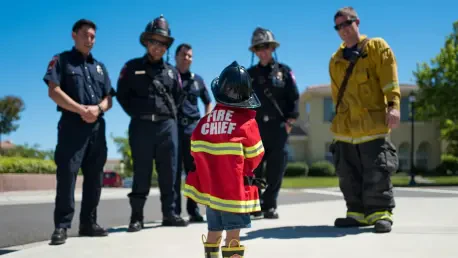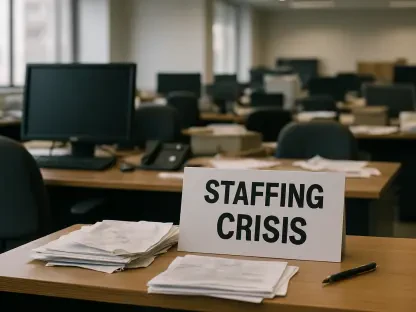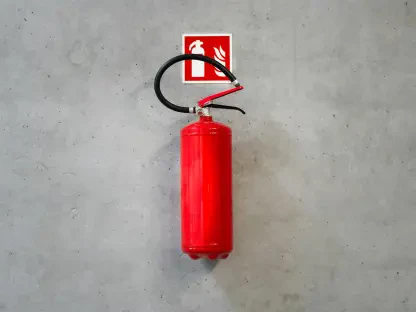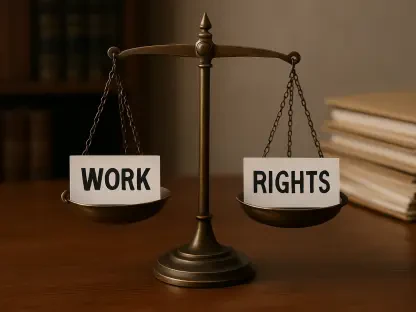Imagine two fire departments. One operates seamlessly, responding to emergencies with unmatched efficiency, while the other faces constant morale issues and operational hurdles. What sets them apart lies at the helm—how effectively fire chiefs support their team members.
The role of fire chiefs extends beyond managing operational logistics. They are pivotal in ensuring their team’s operational and emotional well-being. Fire chiefs’ leadership directly impacts public safety, emergency response efficiency, and firefighter mental health.
Leadership and Communication
Effective leadership and clear communication are the cornerstones of a thriving fire department. Approachable and transparent leaders foster trust and morale within their teams. Chiefs who actively engage with line personnel and lead by example inspire confidence and dedication. For instance, a fire department in Ohio witnessed a significant boost in morale and efficiency after the chief began participating in daily drills and one-on-one sessions with firefighters.
Training and Professional Development
Continuous training and professional development are essential for both fire chiefs and their teams. Implementing comprehensive training programs ensures that everyone remains adept at handling emergencies. For example, additional certifications in advanced firefighting techniques or emergency medical services can significantly enhance a department’s capabilities. Many departments have seen improvements in their response times and service quality after investing in ongoing training initiatives.
Fairness and Equality
Fair treatment within the fire department is crucial for maintaining team cohesion and morale. Ensuring consistent discipline and avoiding favoritism fosters a sense of equality and trust. Studies indicate that departments with fair treatment policies experience 30% higher job satisfaction among their members. Equitable treatment encourages accountability and mutual respect among team members.
Technological Adaptation
Balancing traditional firefighting practices with modern technology can drastically improve operational efficiency. Adopting updated operational methods and integrating technology, such as digital communication tools, can enhance coordination during emergencies. For instance, a fire department in Texas successfully reduced their response times by 25% after implementing GPS-enabled dispatch systems and digital tracking of equipment.
Support and Advocacy
Fire chiefs must advocate for their team’s needs, including better pay, benefits, and equipment. Effective advocacy involves engaging in succession planning and participating in contract negotiations to secure essential resources. Expert opinions suggest that fire chiefs who actively champion their team’s needs see improved retention rates and better overall performance in their departments.
Supporting Evidence
Seasoned firefighters highlight the impact of good leadership on their job satisfaction and performance. Research findings confirm that departments with involved chiefs report higher morale and operational efficiency. Anecdotes from various departments demonstrate that active and supportive leadership leads to tangible improvements in team dynamics and emergency response capabilities.
Practical Steps and Strategies
Fire chiefs can take several actionable steps to better support their team members. Becoming more engaged and communicative with personnel builds trust and morale. Implementing a structured framework for continuous professional development ensures that the department remains competent and resilient. Promoting fairness and equality within the department fosters a cohesive and motivated team. Chiefs should also be proactive in adapting to technological advancements to enhance operational efficiency. Lastly, advocating for the department’s needs ensures that team members have the resources required to perform their duties effectively.
Fire chiefs who focused on these key areas saw their teams thrive, contributing significantly to public safety and emergency response efficacy. Implementing effective leadership, continuous training, fairness, technological adaptation, and robust advocacy created a stronger, more resilient fire department ready to face any challenge.
In conclusion, actionable steps and thoughtful strategies have been paramount in supporting fire department teams. By addressing leadership, training, fairness, technology, and advocacy, fire chiefs have successfully guided their departments toward enhanced performance. Moving forward, these considerations will remain crucial for any department striving to excel in their mission.









